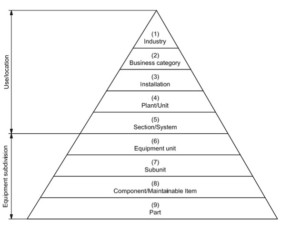
The majority of times that a Root Cause Analysis (RCA) is ‘required’ is often due to some type of threshold of pain being met. Someone is hurt, we’ve had an environmental excursion, we lost a lot of money in throughput or equipment damage, we violated some regulation, etc. Essentially, when the ‘suits’ show up, something bad has happened and we will do an RCA whether we like it or not. This is the basis of ‘reactive RCA’, where we respond to an incident that has already met certain defined requirements, often called ‘triggers’. [Read more…]





 Why is that some organization seem to break the reactive cycle and others don’t? After all most organizations have a PM program and some form of a planning and scheduling program right? The key difference between those that do is their ability to use their
Why is that some organization seem to break the reactive cycle and others don’t? After all most organizations have a PM program and some form of a planning and scheduling program right? The key difference between those that do is their ability to use their 


 Ever wonder how some of the worst industrial disasters occur? It is usually the result of multiple failures. Failure of the primary system and failure of the protective systems. Ensuring the protective system(s) are not in a failed state should be of utmost importance to any organization. But how often should we test the protective systems to ensure the required availability?
Ever wonder how some of the worst industrial disasters occur? It is usually the result of multiple failures. Failure of the primary system and failure of the protective systems. Ensuring the protective system(s) are not in a failed state should be of utmost importance to any organization. But how often should we test the protective systems to ensure the required availability?


 Ever wonder how some organizations make their vibration or thermographic program work, and not only work but deliver huge results to their organization? They use a systematic approach to establishing the correct frequencies of inspection. Establishing the correct frequencies of maintenance activities is critical to the success of any maintenance program. Too infrequently and the organization is subjected to failures, resulting in poor operational performance. Too frequently, and the organization is subjected to excess planned downtime and an increased probability of maintenance induced failures.
Ever wonder how some organizations make their vibration or thermographic program work, and not only work but deliver huge results to their organization? They use a systematic approach to establishing the correct frequencies of inspection. Establishing the correct frequencies of maintenance activities is critical to the success of any maintenance program. Too infrequently and the organization is subjected to failures, resulting in poor operational performance. Too frequently, and the organization is subjected to excess planned downtime and an increased probability of maintenance induced failures. Ask a question or send along a comment.
Please login to view and use the contact form.
Ask a question or send along a comment.
Please login to view and use the contact form.